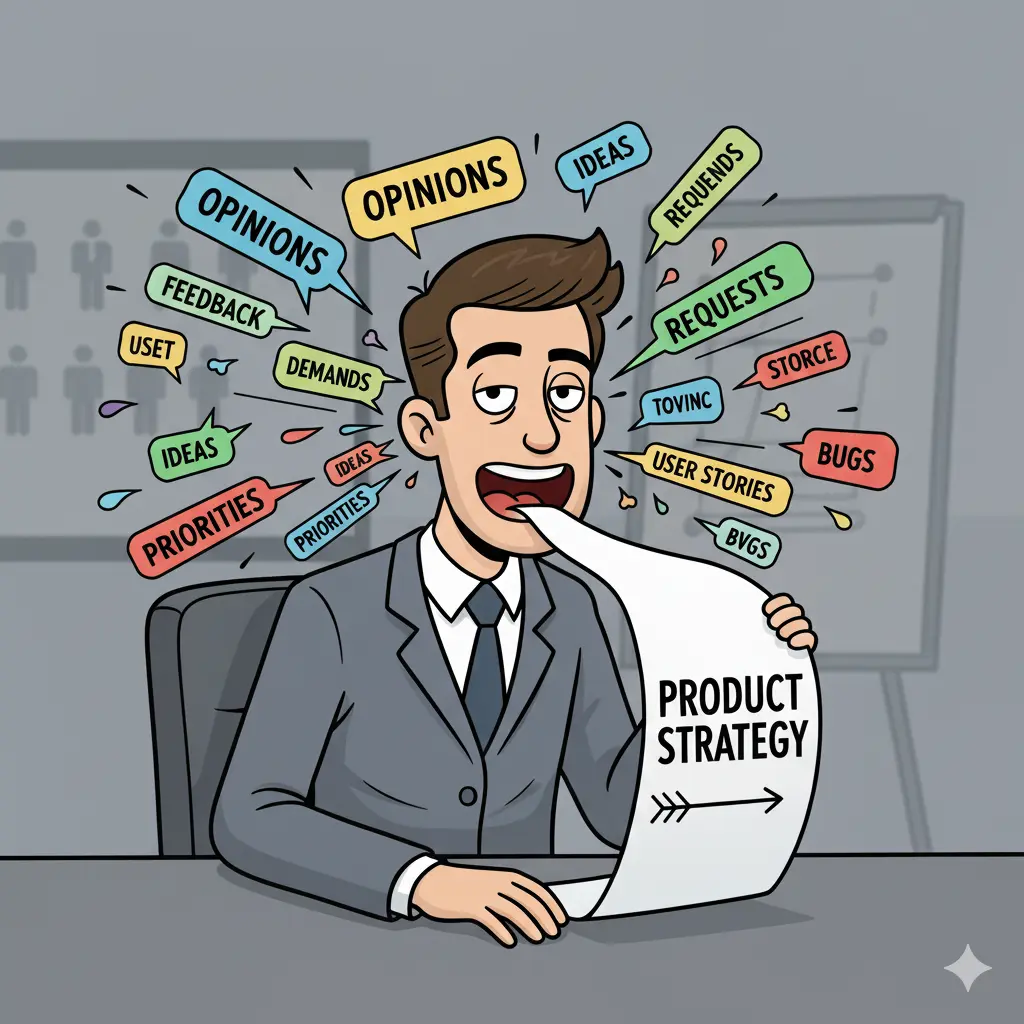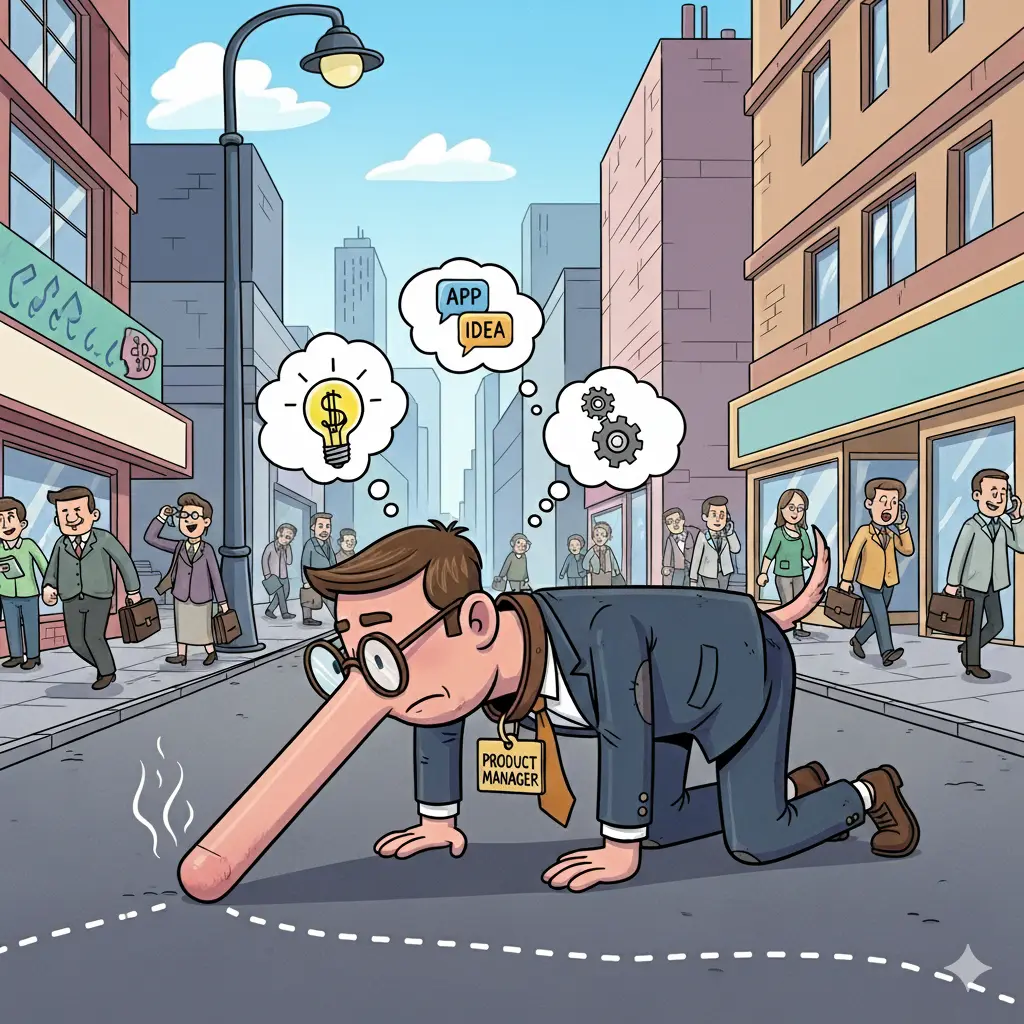
The Political Minefield of Product Management: How Stakeholder Juggling Kills Innovation
Product managers are spending 90% of their time navigating internal politics instead of building great products. Here's why this shift is costing companies their competitive edge.
Product managers are drowning in meetings. Not the kind where they’re solving customer problems or crafting innovative solutions, but the kind where they’re endlessly justifying decisions to stakeholders who’ve never touched the product. The very people hired to drive innovation are becoming glorified politicians, and it’s costing companies their competitive edge.
The 90% Problem: When Politics Overtakes Product
The numbers don’t lie. Product managers report spending up to 90% of their time on internal politics rather than actual product work. Half the battle isn’t understanding the user anymore, it’s navigating stakeholder priorities, explaining the same roadmap 10 times, and defending trade-offs that seemed obvious.
This isn’t just about complaining, it’s about measurable productivity loss. When product managers become professional meeting attendees rather than product visionaries, innovation suffers. Teams continue shipping features, but they’re often the wrong features. The board sees velocity charts moving up and to the right, but nobody’s asking whether customers actually care.
The shift from product-focused work to political maneuvering represents a fundamental misunderstanding of what makes product management valuable. As Top Boss argues ↗, “Instead of finding true product managers, the ones who understand users deeply enough to anticipate their needs, companies are bringing on glorified project managers. People who can keep Jira tidy, ping stakeholders on Slack, and make sure stand-ups don’t run long.”
The Senior PM Trap: Influence vs. Innovation
As product managers advance in their careers, the political demands intensify. Senior PM is less about deliverables and more about influence, alignment, and creating the conditions for the team to succeed. It’s about managing stakeholders, navigating competing priorities, and ensuring everyone understands why the work matters.
This sounds reasonable until you realize what’s being sacrificed. The very skills that made these managers successful, deep customer empathy, creative problem-solving, technical intuition, get sidelined in favor of stakeholder management. The role shifts from “what we build” to “how we get it built”, and the innovation pipeline suffers accordingly.
The most telling insight comes from those who’ve found a workaround: “I try to keep at least one project where I’m close to discovery to stay sane.” When product managers need “sanity projects” to remember why they entered the field, something has gone terribly wrong.
The Meeting Industrial Complex
Modern stakeholder management has become an industry unto itself. Companies invest in high-definition cameras ↗, quality microphones, and sophisticated meeting software, all to facilitate better political navigation rather than better product development.
The irony is palpable: we’ve optimized the process of talking about work while de-optimizing the work itself. As one product leader observed, “Politics has always been part of building a good product. It’s not enough to factually find the best solution to a problem, a good product requires a balance between the best solution, the best timing and the best buy-in.”
But when buy-in becomes the primary focus, we’ve lost the plot. The most innovative products in history weren’t created by committee, they were built by small teams who understood users deeply and had the autonomy to pursue bold visions.
The Innovation Tax: What Gets Lost in Translation
The cost of political product management isn’t just measured in meeting hours, it’s measured in missed opportunities and mediocre products. When product managers spend their time justifying rather than creating, several critical things happen:
Customer insights get filtered through political lenses. Instead of direct user feedback driving decisions, ideas get evaluated based on which executive championed them. One frustrated PM noted the particular challenge of “explaining the roadmap a thousand times to stakeholders who don’t use the app and want to jam in a bunch of wish list items they randomly thought of that won’t move the needle.”
Bold ideas get watered down. Innovation requires risk-taking, but political environments reward safety. The most revolutionary features often get compromised into incremental improvements that offend no one and excite no one.
Technical debt accumulates. When political considerations trump technical ones, teams make short-term compromises that create long-term problems. The product manager who should be advocating for sustainable architecture is instead appeasing stakeholders with quick wins.
Breaking the Cycle: From Political Managers to Product Leaders
The solution isn’t to eliminate stakeholder management entirely, that’s neither practical nor desirable. The goal is to rebalance the equation so politics serves product rather than product serving politics.
Reframe stakeholder management as education, not negotiation. The best product managers don’t just manage stakeholders, they educate them. They bring stakeholders along on the customer journey, sharing insights and data that build genuine understanding rather than requiring constant justification.
Protect discovery time. Companies that want innovative products need to protect their product managers’ time with users. This means saying no to some meetings, delegating political navigation where possible, and creating organizational structures that minimize unnecessary stakeholder interference.
Measure outcomes, not activity. The most dangerous aspect of political product management is that it looks productive. Features ship, meetings happen, stakeholders are appeased. But are customers happier? Is the product meaningfully better? Companies need to shift from measuring activity to measuring impact.
The Future of Product Management in an AI World
As AI begins to automate routine coordination work, the distinction between project and product management will only sharpen. AI can schedule meetings, manage Jira boards, and generate status updates. What it can’t do is build empathy, have hard conversations, or spot the nuance in a customer’s frustration.
The product managers who thrive will be those who double down on the human elements of the role, the deep customer understanding, the creative problem-solving, the courage to make unpopular but right decisions. They’ll spend less time in stakeholder meetings and more time with users, less time justifying and more time creating.
The companies that recognize this shift will build products that matter. The ones that don’t will continue shipping on time while their customers drift away to better solutions. The choice isn’t between politics and product, it’s about ensuring politics serves product rather than the other way around.
The next time you see your product team buried in stakeholder meetings, ask yourself: Are we building a better product, or just better PowerPoints? The answer might determine whether you’re building for next quarter or for the next decade.



